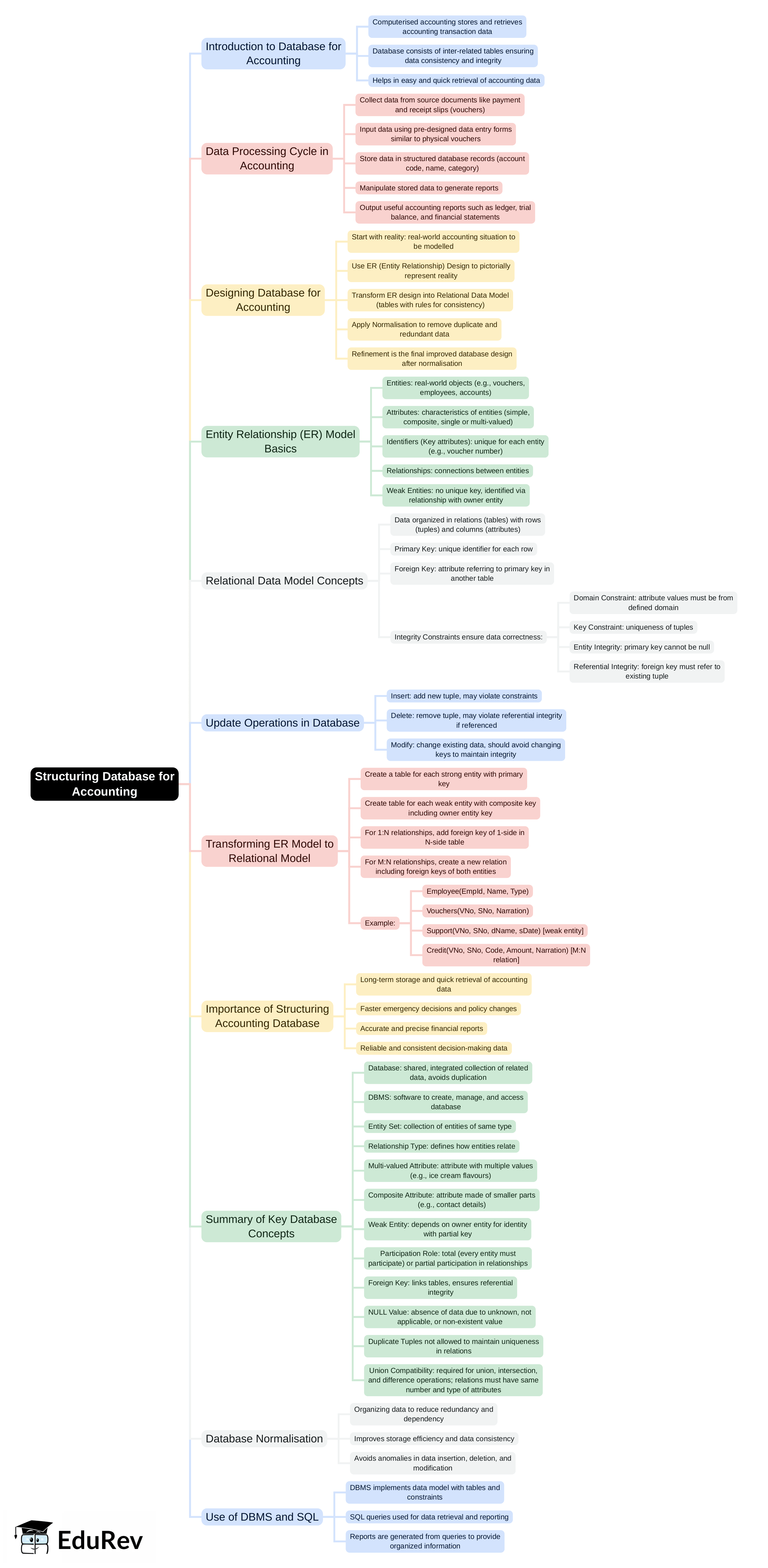SSC CGL Exam > SSC CGL Notes > Finance and Economics > Mind Map: Structuring Database for Accounting
Mind Map: Structuring Database for Accounting | Finance and Economics - SSC CGL PDF Download

The document Mind Map: Structuring Database for Accounting | Finance and Economics - SSC CGL is a part of the SSC CGL Course Finance and Economics.
All you need of SSC CGL at this link: SSC CGL
|
244 videos|225 docs|105 tests
|
FAQs on Mind Map: Structuring Database for Accounting - Finance and Economics - SSC CGL
| 1. What are the key components that should be included when structuring a database for accounting? |  |
Ans. When structuring a database for accounting, key components include tables for transactions, accounts, customers, vendors, and employees. Each table should have specific fields: for transactions, fields might include transaction ID, date, amount, account ID, and description; for accounts, fields should include account ID, account name, and account type. Additionally, relationships between tables should be well-defined to ensure data integrity and facilitate reporting.
| 2. How can data normalization benefit an accounting database? |  |
Ans. Data normalization helps eliminate data redundancy and ensures data integrity in an accounting database. By organizing data into related tables and minimizing duplicate entries, normalization improves the efficiency of data retrieval and reduces the risk of inconsistencies. It typically involves processes such as dividing large tables into smaller, related tables and using foreign keys to link them.
| 3. What are the common challenges faced while designing an accounting database? |  |
Ans. Common challenges include ensuring data accuracy and consistency, managing complex transactions, and scalability as the volume of data increases. Additionally, maintaining security and access control is crucial, especially since accounting data is sensitive. Ensuring compliance with regulatory standards for financial reporting can also complicate the design process.
| 4. How does the use of a relational database model enhance accounting practices? |  |
Ans. A relational database model enhances accounting practices by allowing for structured data storage and easy retrieval through SQL queries. It supports relationships among different data entities, making it easier to generate reports and perform analyses. The model also facilitates multi-user access, ensuring that multiple stakeholders can work with the data simultaneously without conflicts.
| 5. What role do backups play in maintaining the integrity of an accounting database? |  |
Ans. Backups are crucial for maintaining the integrity of an accounting database, as they protect against data loss due to hardware failures, corruption, or cyberattacks. Regular backups ensure that there is always a recent version of the data available for recovery, allowing businesses to restore their accounting information to a point before an incident occurred. Implementing a robust backup strategy is essential for business continuity and compliance with financial regulations.
Related Searches




















